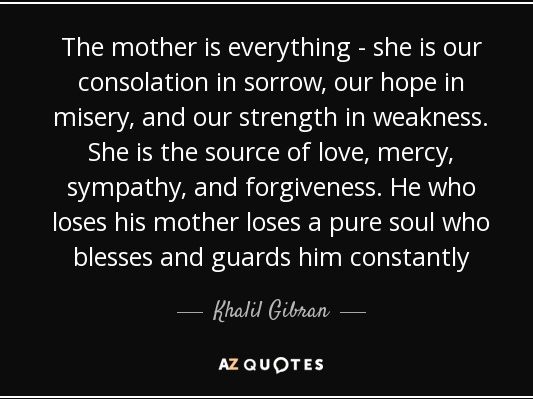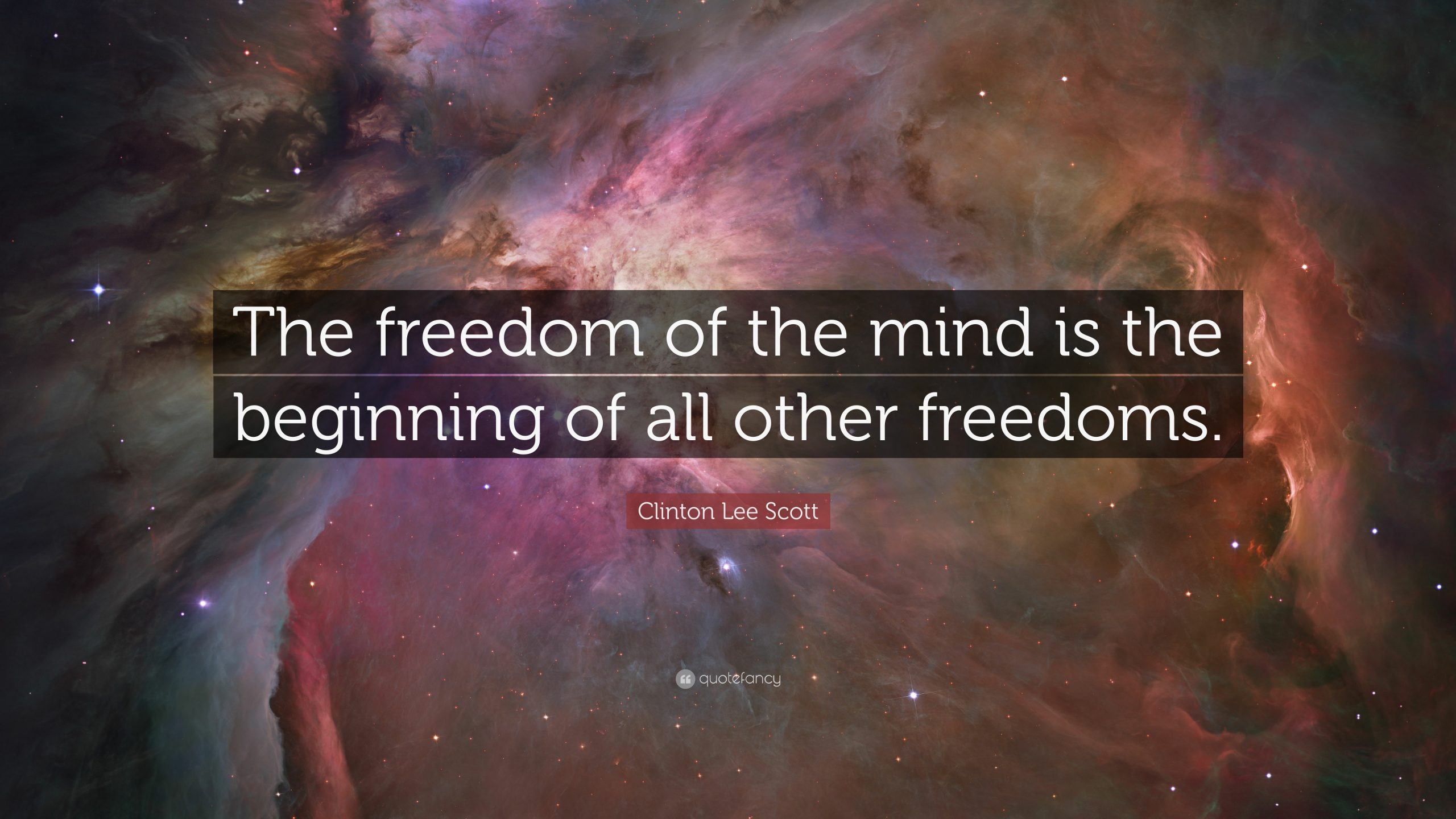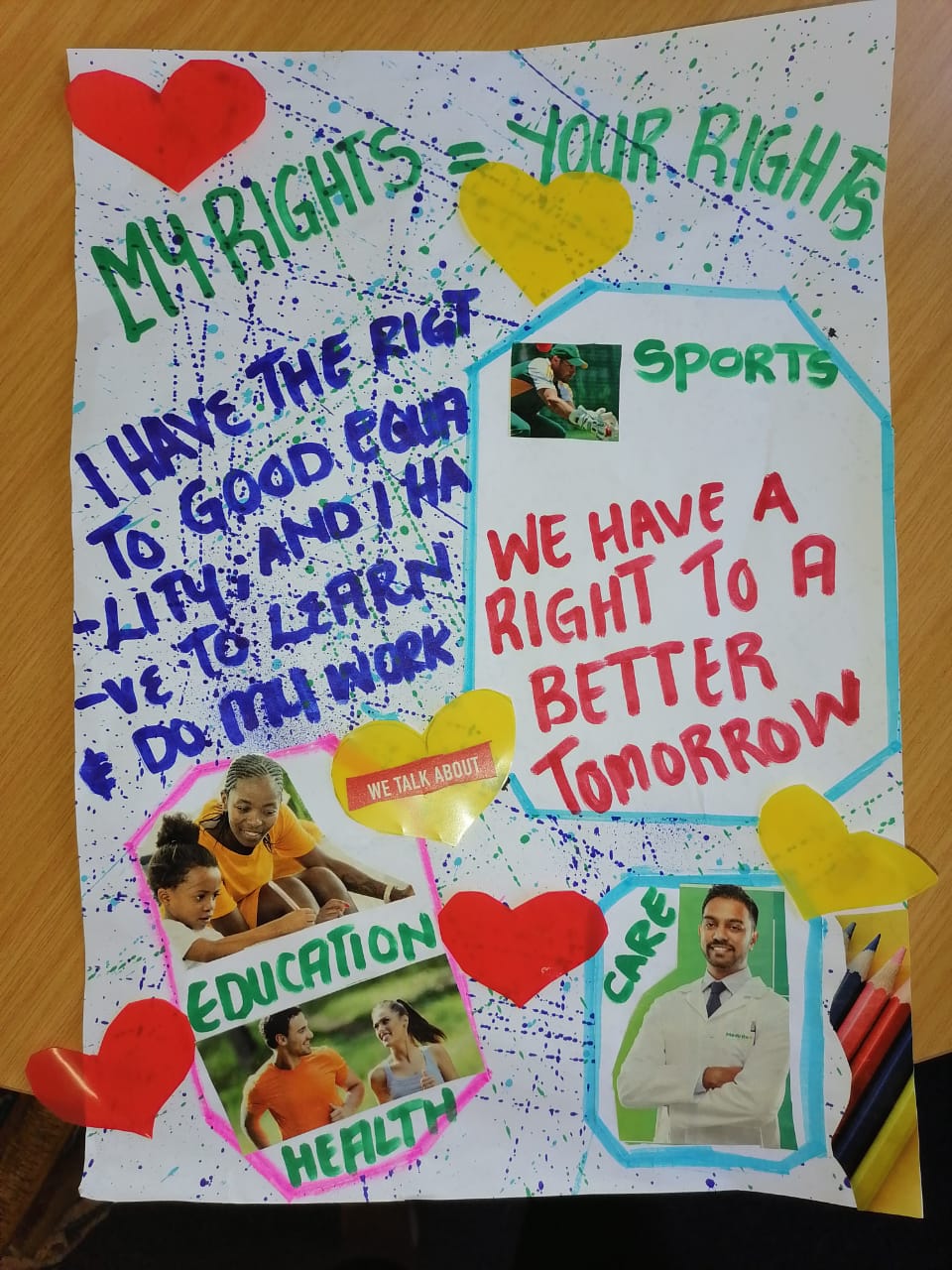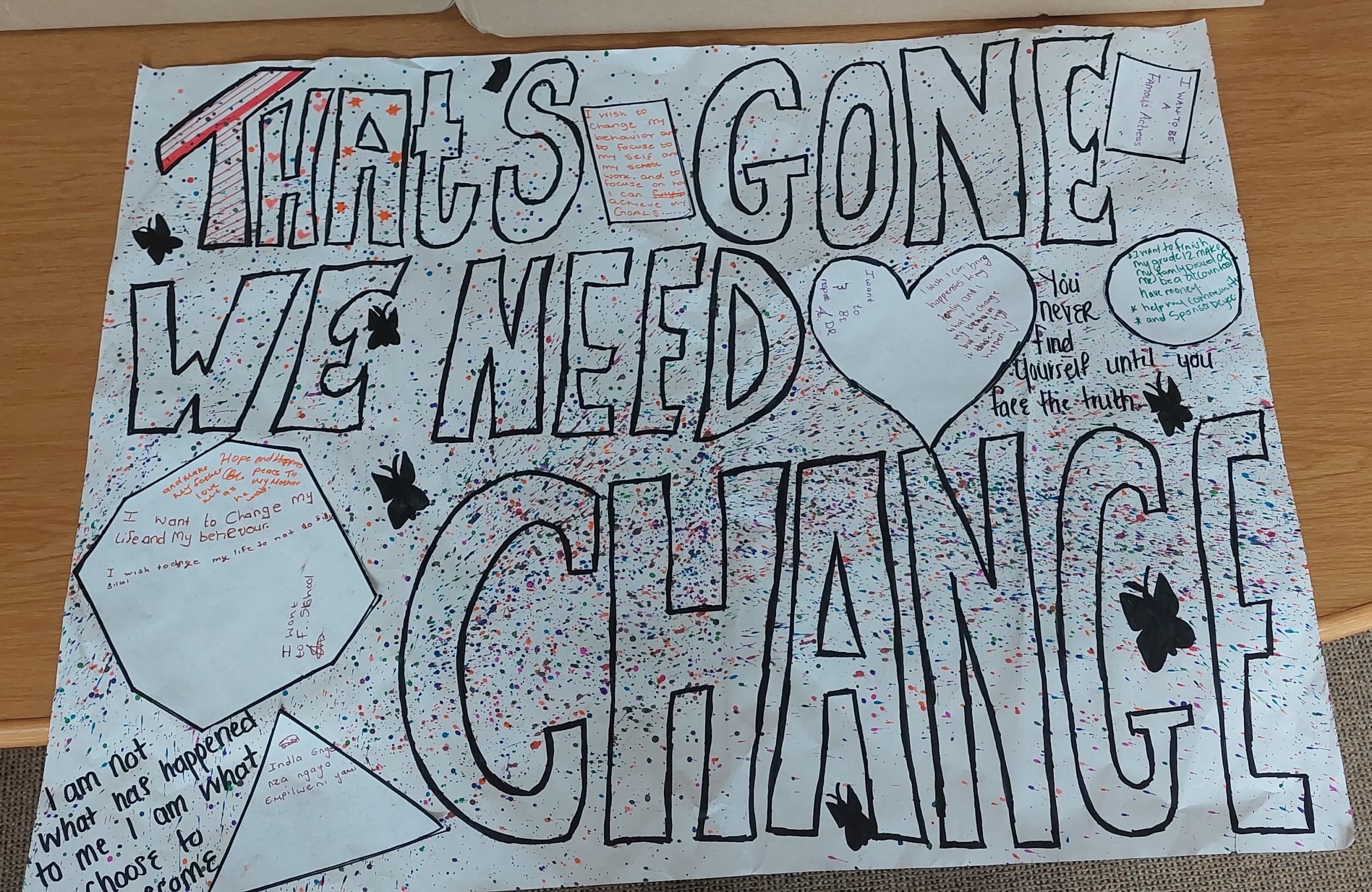Jul 27, 2022 | Blog
Attention deficit hyperactivity disorder (ADHD) is a mental health condition that can cause unusual levels of hyperactivity and impulsive behaviours. Children with ADHD may also have trouble focusing their attention on a single task or sitting still for long periods of time. This disorder can have a significant effect on children’s education and relationships, both with family members and their peers.
As I prepared to write this blog a little boy that was placed in our care a few years ago came to mind. Let’s call him Kevin. When Kevin came to us, he had difficulty trusting people, especially adults and was often angry and withdrawn – swearing at adults, hitting other children, and breaking property. He struggled to adjust to the structure and routine of our Home and wouldn’t join in any of the programmes or activities. School was even more of a problem. Almost every day, he would sneak out of the school grounds and walk all the way back to DCYCC on his own. We were so worried something would happen to him! We tried a different school, but he remained defiant and refused to complete his schoolwork. A Cognitive and Emotional Assessment at the Children’s Assessment Centre in Sherwood concluded that undiagnosed ADHD had contributed to academic challenges resulting in previous poor school attendance. And that this resulted in him lacking the foundation needed to build academic development.
Effective treatment of ADHD includes behaviour therapy and medication. Generally, the two interventions used simultaneously result in the best outcome for children. The goal of behaviour therapy is to learn or strengthen positive behaviours and eliminate unwanted or problem behaviours. And the medication deals with the imbalance in levels of neurotransmitters in the brain.
There is no quick fix for ADHD. It takes time, patience, and special support to help children find their way. Some of the things that we were able to do to help Kevin cope were to; put him on the recommended medication to manage the condition, we enrolled him in a remedial school for children with special learning needs where the classes were smaller, and he was able to benefit from individual attention and sent him to a psychologist for therapy. Kevin is now enthusiastic about going to school and is thriving academically and beginning to feel good about himself again. He is also learning to trust adults and has developed a close bond with his social worker and caregivers. He is doing much better now than when he first arrived. He does have an outburst now and then, but we are consistent in the way our staff respond to help him during those times. Here are some of the steps that you could use to help your child:
- Create structure in your daily home routine
- Break the daily routine into manageable bite size tasks
- Simplify and organise your child’s schedule
- Limit distractions
- Encourage exercise
- Regulate sleeping patterns
- Model out-loud thinking
- Promote ‘wait-time’
- Find a professional to offer therapy
- Believe in your child
- Remember to factor in ‘break time’ for yourself
- And remember to breath and keep calm
https://www.healthline.com/health/adhd/parenting-tips#what-not-to-do

Jun 15, 2022 | Blog
“We, the people of South Africa, have journeyed far since the long lines of our first democratic election on 27 April 1994, when we elected a government for us all. We began to tell a new story then. We have lived and renewed that story along the way. Now in 2030 we live in a country which we have remade. We have created a home where everyone feels free yet bounded to others, where everyone embraces their full potential. We are proud to be a community that cares. We have received the mixed legacy of inequalities in opportunity and in where we have lived, but we have agreed to change our narrative of conquest, oppression, resistance…” The vision statement of our country’s National Development Plan speaks about how far we’ve come as people of South Africa and the endless possibilities of a remade country with incredible opportunities that could be realised.
Despite the massive challenges, we continue to face as a country, as we celebrate Youth Day on June 16th, we MUST give focus to the young people of our country. Any possibility of a “remade” country depends on them. South Africa’s future depends on them. Our young people must be thought that fairness and equality does matter. They should be taught that crime and corruption is not and should never be accepted as the norm.
Achieving the goals of the NDP by 2030 is a tall order, but not impossible. The bottom-line is that all of us; children, youth, adults, senior citizens, and government officials, of our beautiful country can choose to make this vision a reality. We need a reconditioned mindset to envisage the realisation of a remade South Africa. We must think, speak, and do things differently – doing for self-gain must be put to death – in all things; our words, actions and deeds, consideration should be given to the many ways in which we can positively impact circumstances for not only ourselves but others around us as well.
We cannot exercise control over others, but we do have control over ourselves. We can choose to be positive examples for the young people around us. We can be influencers of change! Raising a child requires giving attention to their overall growth and development at every phase of their lives. It’s easier when you are assisting a child, however a little more work is needed to help youth develop and grow into mature, independent, and upright members of our community. External factors may affect them, but when sound foundations have been established, it won’t change who they are. Let us determine to be a catalyst for social change.
The following is an interesting article on social influence on positive youth development: A developmental neuroscience perspective. An insight in emerging evidence highlighting how social influences from both peers and family can play a positive role in adolescents’ adjustment in society. Click here for the full article https://www.ncbi.nlm.nih.gov/pmc/articles/PMC6345387/
Source: National Library of Medicine (This work was supported by the National Institutes of Health (R01DA039923 to Telzer) and the National Science Foundation (SES 1459719 to Telzer).

May 9, 2022 | Blog
Child Protection is everyone’s business! And mothers have an important role to play in this regard, as the home is the seat of learning values, beliefs, cultural and societal norms, and life skills.
During this month of Child Protection Awareness, which coincides with the celebration of Mother’s Day we felt it fitting to look at what mothers can do to provide their children with a caring, loving, and safe environment.
When we hear ‘child protection’ our thoughts invariably go to protection from sexual predators, physical abuse within the family and child trafficking, and yes, it is all of this, however there is also the need for children’s emotions, dreams, self-esteem and developing personalities to be protected.
The following are ideas that mothers can use to create a safe environment for children;
- Teach your child life skills – Children should learn to be cautious, alert, and prepared – not fearful.
- Be calm and reassuring – Children should feel comfortable raising anything that concerns them with you.
- Give your child permission to say “No” and ‘tell on’ – Explain the difference between a surprise and a secret, surprises are for things that make people happy, while secrets make people feel uncomfortable and unsafe.
- Help your child identify trusted adults – Talk to children about who they can go to in an emergency.
- Teach and set body boundaries – Tell children that their private parts are the parts covered up and that no one should touch their private parts or ask them to touch other people’s private parts.
- Teach your child the buddy system – Children should be told that it is always safer to be with others than alone.
- Teach your child your cell phone number and who else they can phone for help.
- Role-play with your child – Children learn by doing. They need to practice saying “No”!
- Play the “What If” game – Help children think of responses to various situations.
We can make a difference, we don’t have to be perfect, just willing to listen, learn, grow, and change the way we think and do things.
Reference – https://onetoughjob.org/articles/10-ways-to-keep-children-safer

Apr 26, 2022 | Blog
Freedom Day on 27 April is an annual celebration of South Africa’s first non-racial democratic elections of 1994. It is significant because it marks the establishment of a new democratic government led by Nelson Mandela and a new state subject to a new constitution.
It’s difficult to celebrate this Freedom Day in such unprecedented times. Most of us are still reeling from the aftereffects of the Covid-19 pandemic and lockdown, the week of unrest in 2021 and now the devastating floods in KZN. Celebrating at a time when we feel ensnared by such overwhelming and challenging circumstances just seems impossible.
What does it feel like to be free to work and earn a living – but there’s no jobs available.
What does it feel like to run your own business – but have no finances to trade because you’ve lost everything you’ve worked for.
What does it feel like to work hard to build a home for your family – but your home was washed away and in a blink of an eye you became homeless.
What does it feel like to get an education, work hard to make your parents proud – but your parents are suddenly no more!
We’ve lost thousands of people in South Africa over the last two years. Thousands have lost their job and striped of their livelihoods. Many battling with the physical and medical effects of Covid-19. The most dangerous trap that we can fall into during these times is depression and anxiety.
In our efforts to help parents during this time, please kindly find below a link to a useful guide on dealing with anxiety in children.
“The child you love, the one who used to be so care-free, is experiencing anxiety.
If you’re an adult who’s known the weight of anxiety in your own life, you already understand a bit of what your child is experiencing. But maybe you’ve been able to move through the world mostly free of anxious thoughts. Whatever your experience, you can help your child learn to notice and deal with his or her anxious thoughts. And, specifically, you can encourage your child to experience relief by implementing the practices he or she is learning in Anxious for Nothing.”
Read more – http://maxlucado.com/wp-content/uploads/Anxious-for-Nothing-Parent-Guide.pdf

Mar 22, 2022 | Blog
Human Rights Day, a national holiday in South Africa, is always celebrated on March 21st. The holiday commemorates the establishment of the South African Human Rights Commission (SAHRC). The aim of the SAHRC is to promote respect for human rights, the protection, development, and attainment of human rights, and to monitor and assess the observance of human rights in South Africa.
Since caring for children and youth being our core focus, we dedicate this month’s blog post to highlighting the constitutional rights of children.
Section 28 of the Bill of Rights, as found in our Constitution, states that “every child has the right to basic nutrition, shelter, health care and social services, as well as the right to be protected from maltreatment, neglect, abuse or degradation”. Our Constitution prioritizes children’s rights and when it comes to any matter affecting a child’s well-being, this important document states that ‘’the best interests of a child are of paramount importance’’.
Here at DCYCC we strive to ensure that the children placed in our care ‘experience’ their rights, that is, understand their rights, have access to their rights, know the responsibilities attached to their rights and know how to complain if they believe that their rights are not being met or are being violated.
Section 28 of the Bill of Rights, says:
Every child has the right to:
- A name and a nationality from birth.
- Family care or parental care, or to appropriate alternative care when removed from the family environment.
- Basic nutrition, shelter, basic health care services and social services.
- Be protected from maltreatment, neglect, abuse or degradation.
- Be protected from exploitative labour practices.
- Not be required or permitted to perform work or provide services that are inappropriate for a person of that child’s age or risk the child’s well-being, education, physical or mental health or spiritual, moral or social development.
- Not be detained except as a measure of last resort, in which case, in addition to the rights a child enjoys under sections 12 and 35, the child may be detained only for the shortest appropriate period of time and has the right to be kept separately from detained persons over the age of 18 years.
- Be treated in a manner, and kept in conditions, that take account of the child’s age and have a legal practitioner assigned to the child by the state, and at state expense, in civil proceedings affecting the child, if substantial injustice would otherwise result.
- Not be used directly in armed conflict, and to be protected in times of armed conflict.
Let us remember that advocating for children’s rights is everyone’s business!

Feb 25, 2022 | Blog
How many New Year’s resolutions did you make this year? How many have you actively focussed on over the past two months? I think it’s safe to say that many of us have great intentions however fall short with the follow through. I have often pondered on this after a session with a young person which has focussed on the need for change in some area of their behaviour and have always been compassionate when the identified and often deeply desired change does not happen within the discussed time frame.
Definitions of change talk to ‘an act or process through which something becomes different’. ‘A transitioning of something to another state or condition’. I like to use the analogy of the metamorphosis, (a Greek word that means to change in shape), of a butterfly to encourage young people not to give up after one or a few attempts to change a certain aspect of their behaviour.
In our work with children and youth we believe in the power of the Strengths-based approach which focusses on existing strengths and not their weaknesses. It is this approach that creates an environment that encourages and enables young people to keep trying.
Wayne Hammond and Rob Zimmerman set out the principles of the Strengths-based approach in the following manner; that all people have strengths and capacities, that people can change, that given the right conditions and resources, a person’s capacity to learn and grow can be nurtured and realized, that people change and grow through their strengths and capacities, that people are experts of their own situation, that the problem is the problem, not the person, that problems can blind people from noticing and appreciating their strengths and capacity to find their own meaningful solutions, that all people want good things for themselves and have good intentions, that people are doing the best they can in light of their experiences and that the ability to change is within us!
One of our teenage girls proved this to be true when she courageously facilitated a session on ‘’change’’ with her peers. She has found the secret – change comes from within, when we determine that areas of our behaviour need to change, then begin to believe that we can, and then decide to take the first step and then the next and the next – and suddenly when we look at ourselves, we see it; a beautiful butterfly!
https://www.esd.ca/Programs/Resiliency/Documents/RSL_STRENGTH_BASED_PERSPECTIVE.pdf





